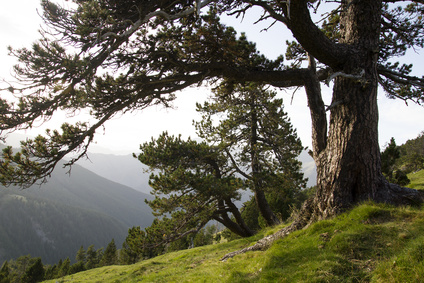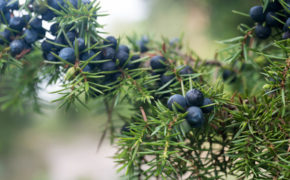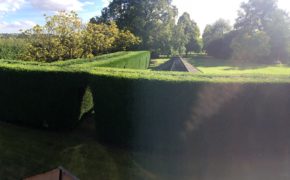
Get a quick no obligation quote It’s free and will only take a jiffy!
When Should I Prune my Black Pine Tree?
When is the best time to prune a black pine tree? Why is black pine tree pruning so crucial? And what are the most common black pine tree diseases? All will be revealed when you read on…
The black pine tree, or Pinus nigra, also known as the Austrian or Corsican pine, is native to the coastal regions of southern and central Europe and, although not UK native, is also widely grown throughout the United Kingdom as an ornamental tree. This is a tree that stands up to drought, heat, salt and snow and ice very well, which is why it has become so popular in this country.
The black pine is well known for its longevity, often reaching the age of 500 years or more, and it is also renowned for its fast growing habit where heights of over 12 metres and spreads of more than 8 metres are common. It’s a bushy tree that is evergreen and provides excellent all-year-round screening and windbreak benefits. The timber is very hard and used in construction and for paper making.
Why prune a black pine tree?
Whilst the black pine tree rarely needs pruning in maturity other than to keep it safe, healthy and in check so that it does not block light or pose a hazard, there are benefits to pruning this tree in its earlier, formative years.
Black pine tree pruning during active shoot growth promotes a new set of buds for the following year’s growth. The new shoots of the current year (the ‘candles’), when pinched back carefully in spring, will promote a dense, compact growth pattern for the tree. Be sure not to use shears though, as the needles will more than likely turn brown.
It is important to take great care when pruning a pine tree. You should never work to the goal of shortening branches because that will stunt the growth of the branch. Just remove the entire branch if it is damaged.
Branches that are rubbing together should also be removed in order to protect the health of the tree, as rubbing leads to wounds that allow the ingress of disease and insects.
When is the best time for black pine tree pruning?
Black pine tree pruning is best carried out during the spring, although damage correction can be undertaken at any time of the year. It is important to deal with broken or poorly growing branches immediately, but do try to avoid late summer or early autumn pruning wherever possible as the cuts won’t heal in time to be protected from the winter frosts and harsh weather conditions.
A recently planted pine tree will also benefit from pruning in order to bring the branch structure in balance with the new root system. Always remember that a well-pruned young black pine tree will need very little, if any, pruning in its later years. It’s much easier to remove young, smaller limbs than to take out larger, fully grown limbs, which will also affect the overall look and health of the tree.
What to look for when pruning a black pine tree
Red band needle blight is a problem for the black pine tree in plantations. Also referred to as Dothistroma needle blight, this is a disease that affects black and Scots pine, leading to loss of needles and eventually the weakening and sometimes total demise of the tree. Look out for tan or yellow coloured spots on the needles which eventually turn red at the ends. It is important to report this disease to the Forestry Commission should you spot it, using the Tree Alert reporting tool.
Sometimes you will spot lower branches dying off. This could simply be down to ageing, although in some cases it may be that the branches are not getting enough sunlight. It may help to trim surrounding trees to allow a greater degree of light penetration. On the other hand, it could be water stress leading to the issue. Ensure your pine tree is well watered during dry periods, and lay down organic mulch to hold the moisture in.
Also look out for conifer aphids, sawfly, the pine shoot moth and adelgids.
Tree Preservation Orders
You must never commence any form of tree work if there is a Tree Preservation Order (TPO) in place. Check before you go ahead and if you do find there is an Order in place then you will need to apply to the local authority for permission to deal with it, which can take up to eight weeks. Also be aware that if the tree is located in a conservation area, permission must be sought before undertaking works of any kind.
The importance of black pine tree pruning expertise
Your black pine tree is no doubt important to you and if you rely on black pine trees for privacy hedging or windbreaks then you will want to ensure they are maintained in good condition and perfect health, year round.
The only way to guarantee this is to enlist the professional assistance of a qualified tree surgeon. They will know precisely how and when to prune your black pine tree and will be able to spot and deal with any diseases or pest infestations.
When choosing a tree surgeon, be sure to ask for checkable references and certificates that document their qualifications. Also, ask to see insurance documents so you have peace of mind that you are covered for the work being undertaken. In addition, if possible, try to engage a tree surgeon with Trading Standards and local authority approval for a guarantee of value for money.
If you have a black pine tree that needs pruning or trimming, why not get in touch with T.H. Tree Surgery Services? As fully qualified and extensively experienced Trading Standards and local authority approved tree surgeons, we can offer specialist expertise across all aspects of black pine tree pruning. For a free, no-obligation quotation, contact our friendly experts on 01268 642814 or get in touch here.
Had a fallen tree in the early hours of Monday morning, called for quote and the team had it cleared on the same day. Really good communication when the lads were onsite and did a great job. Lots of pride in their work shown with the thorough clear up. Would thoroughly recommend.
Thank you Stuart for your kind review. We were glad to be able to help you with your fallen tree. If there's anything else you need in the future, please don't hesitate to get in touch.








